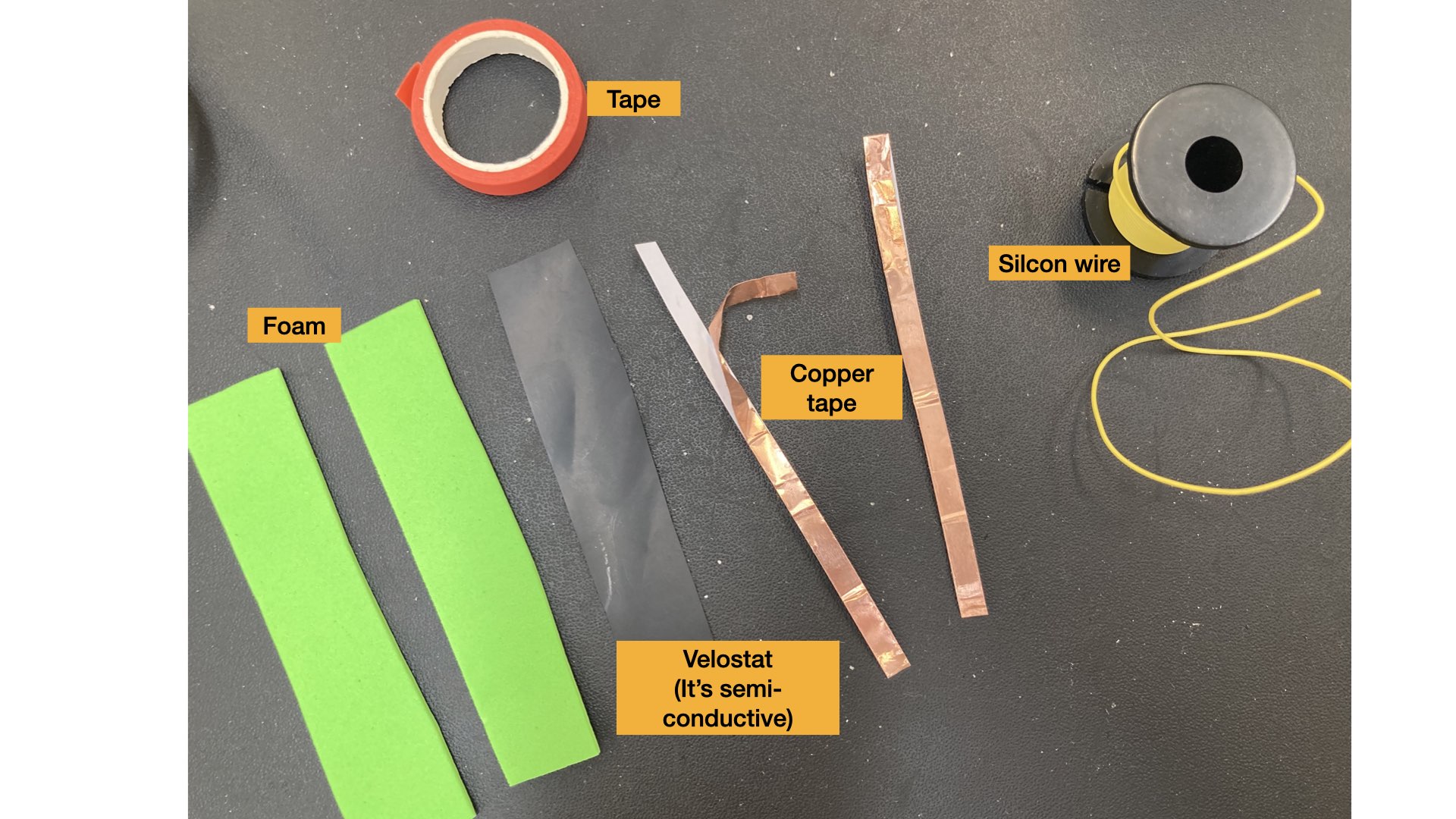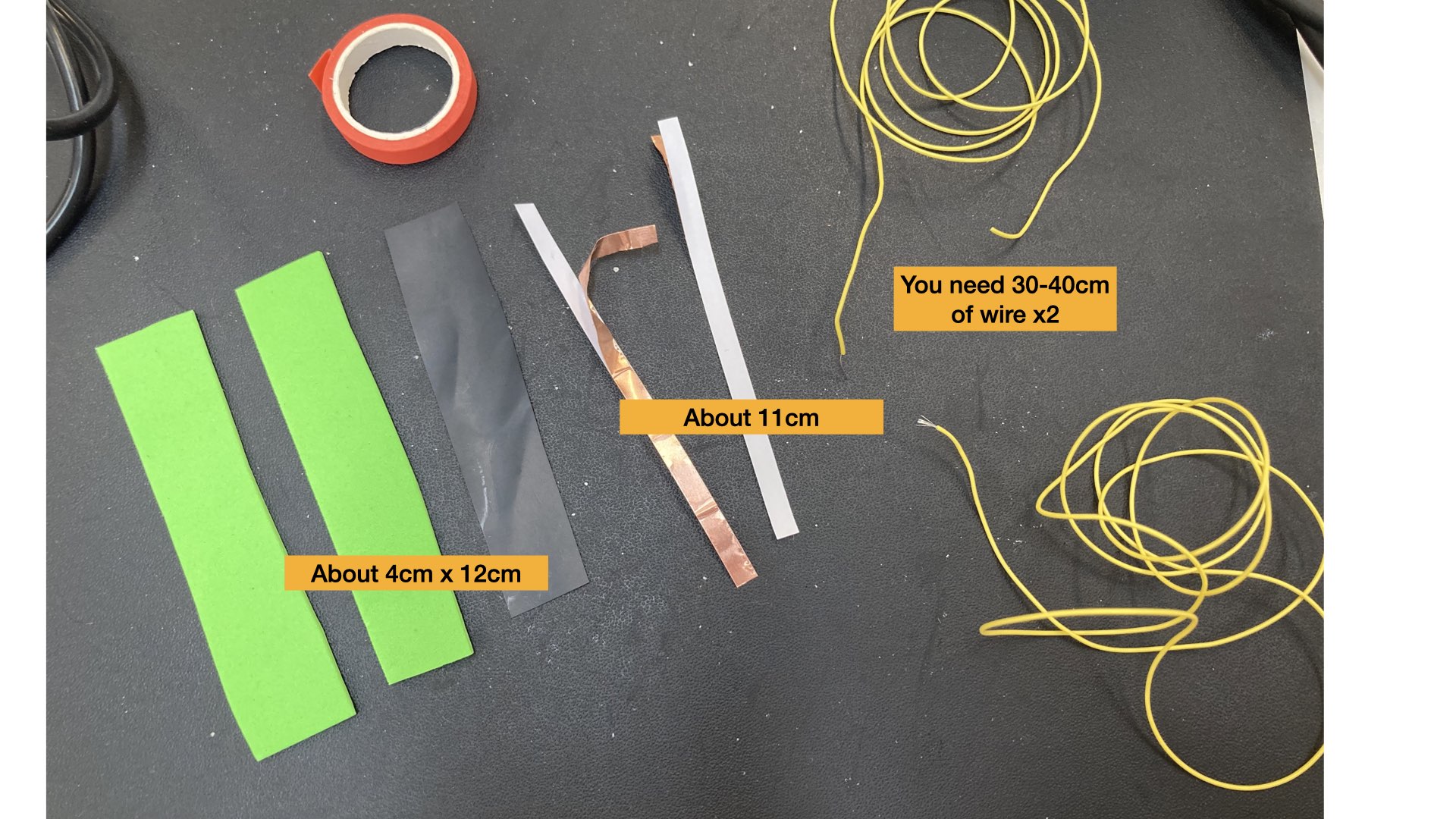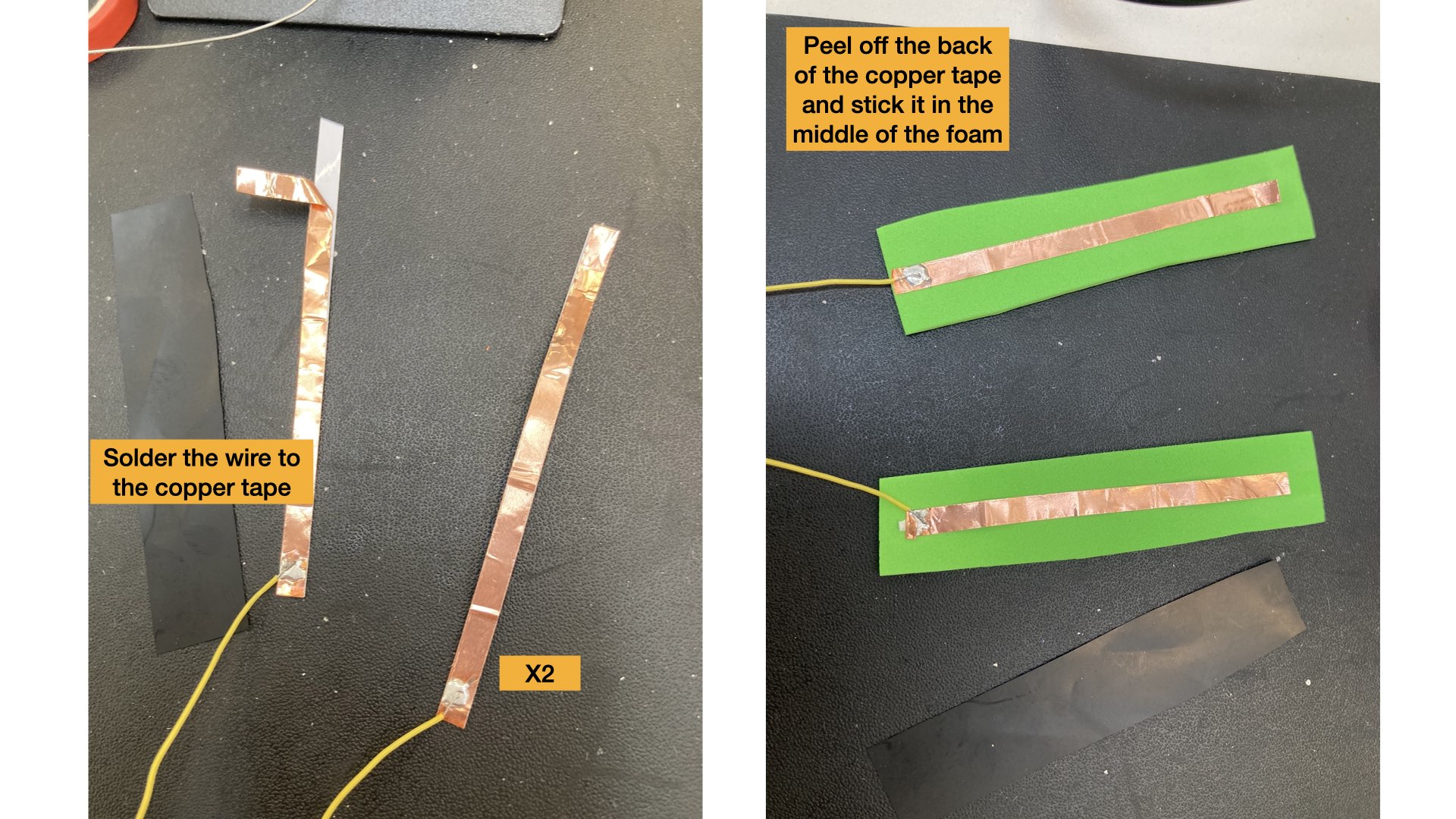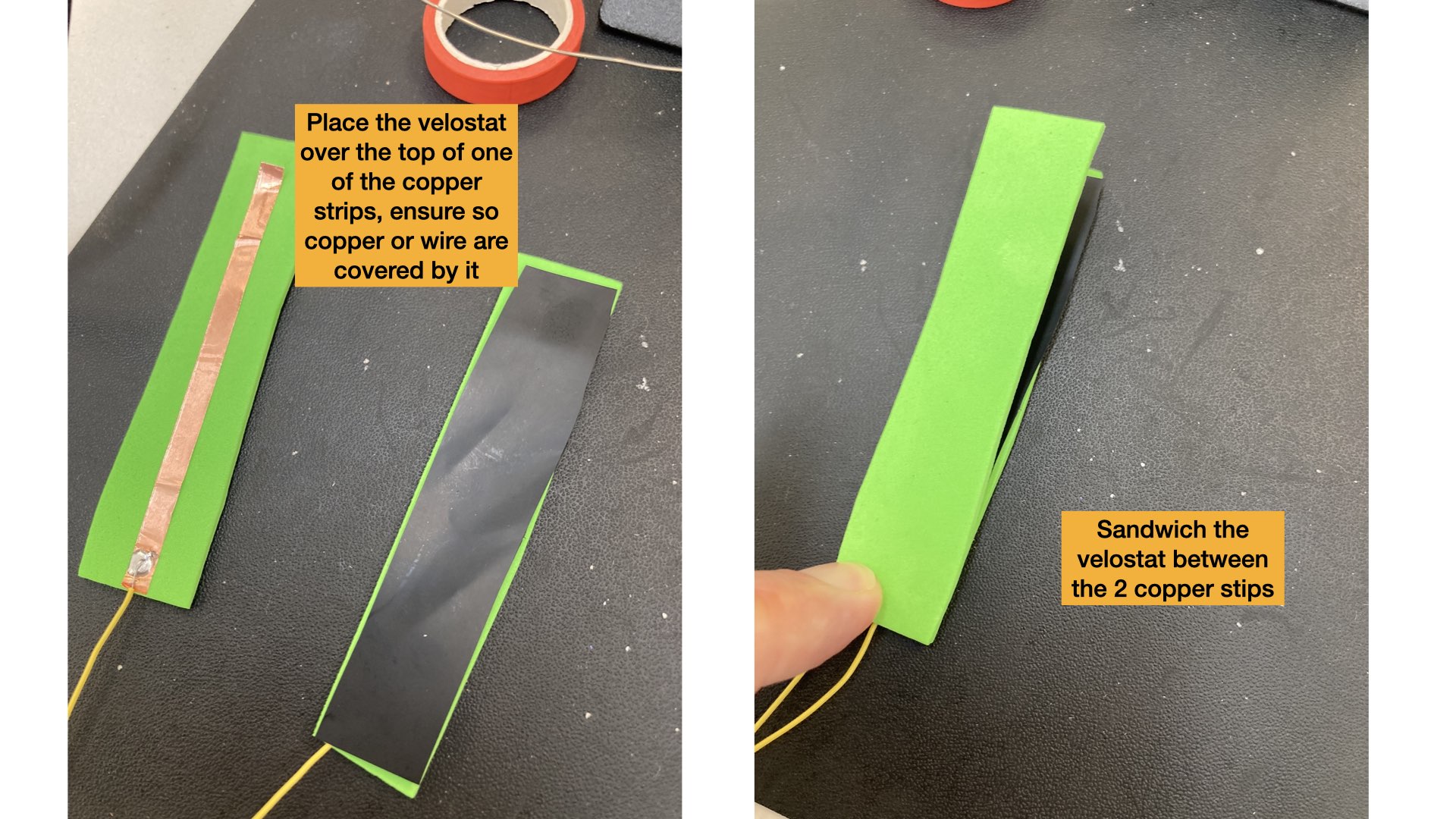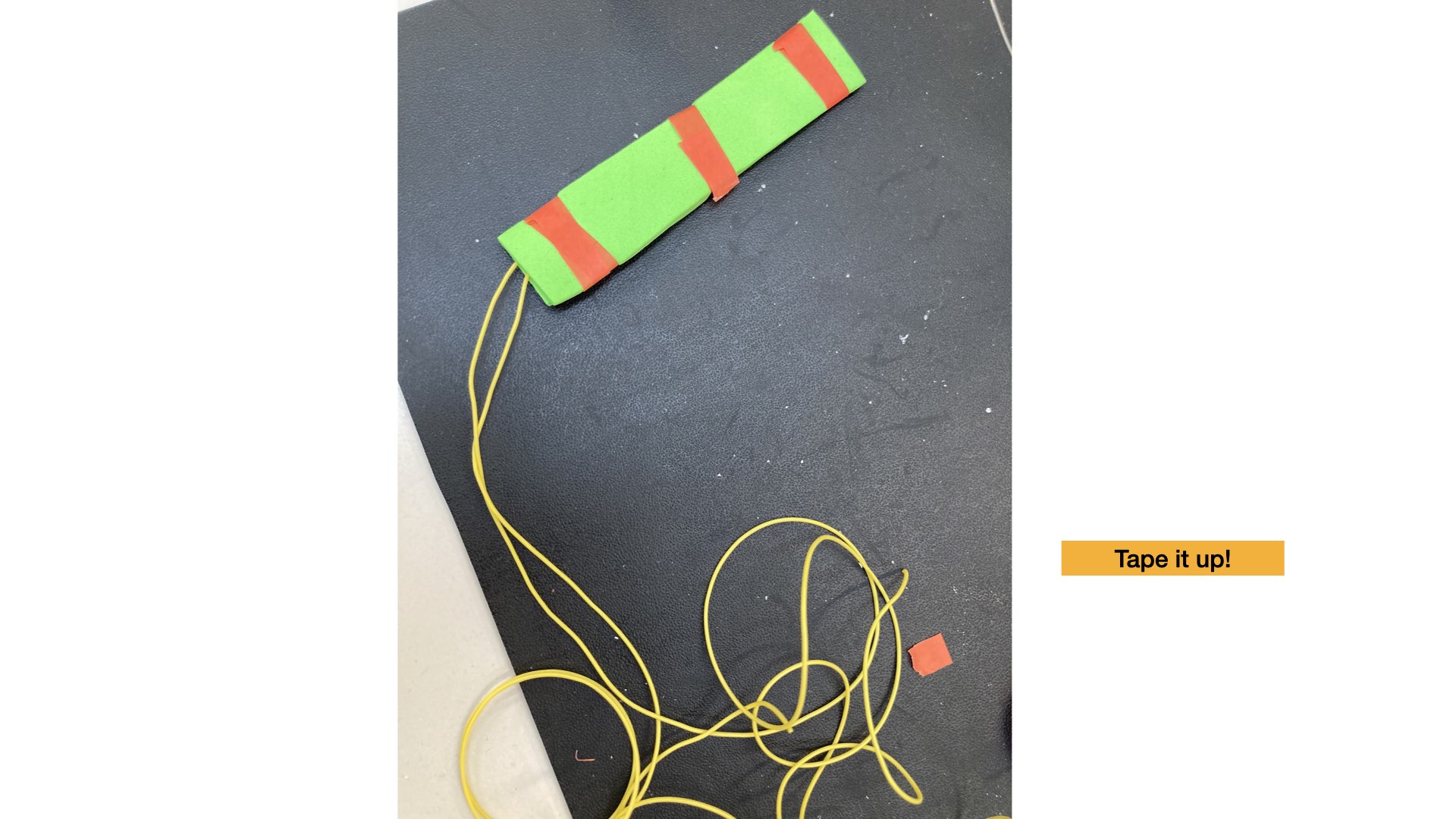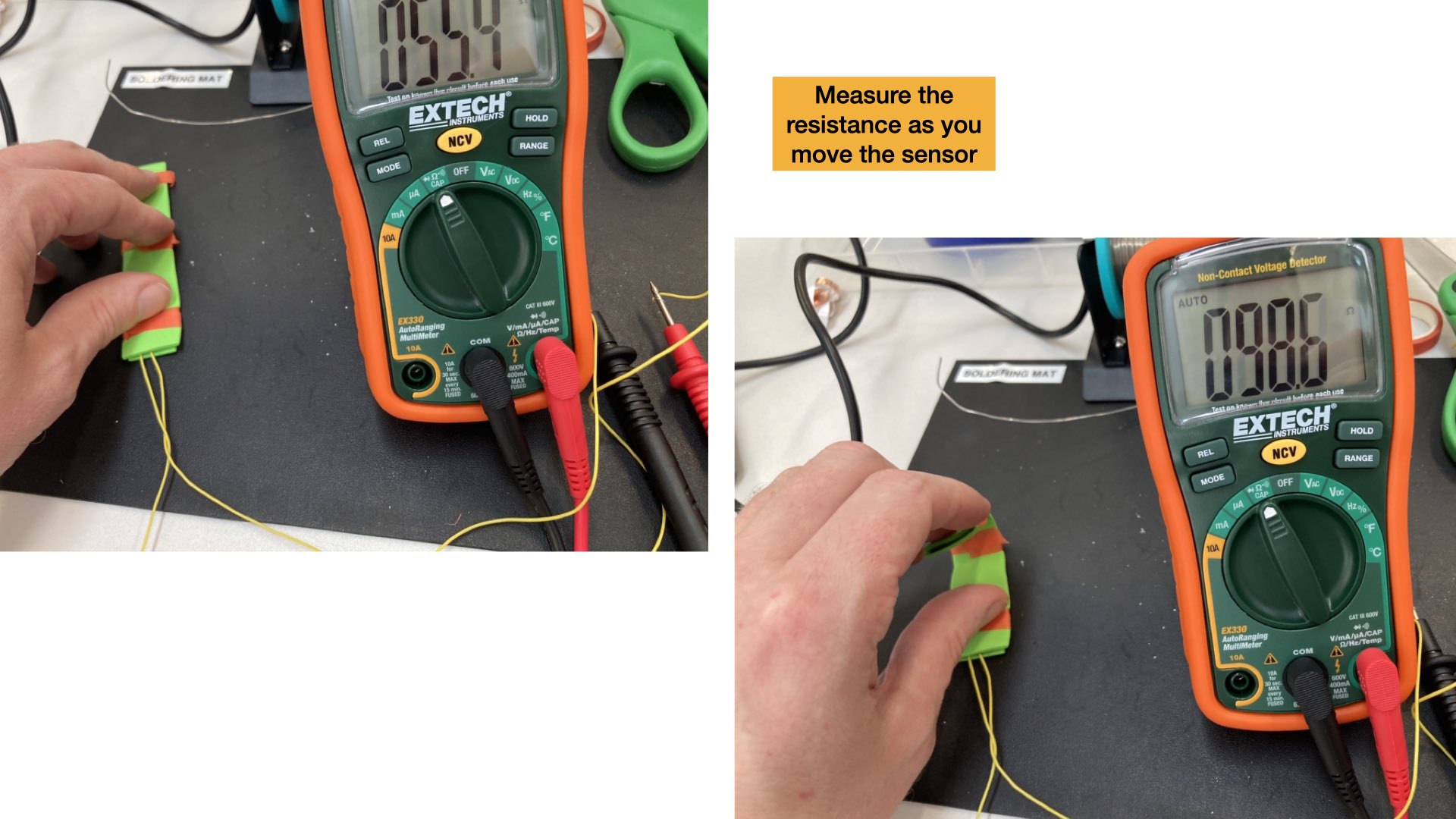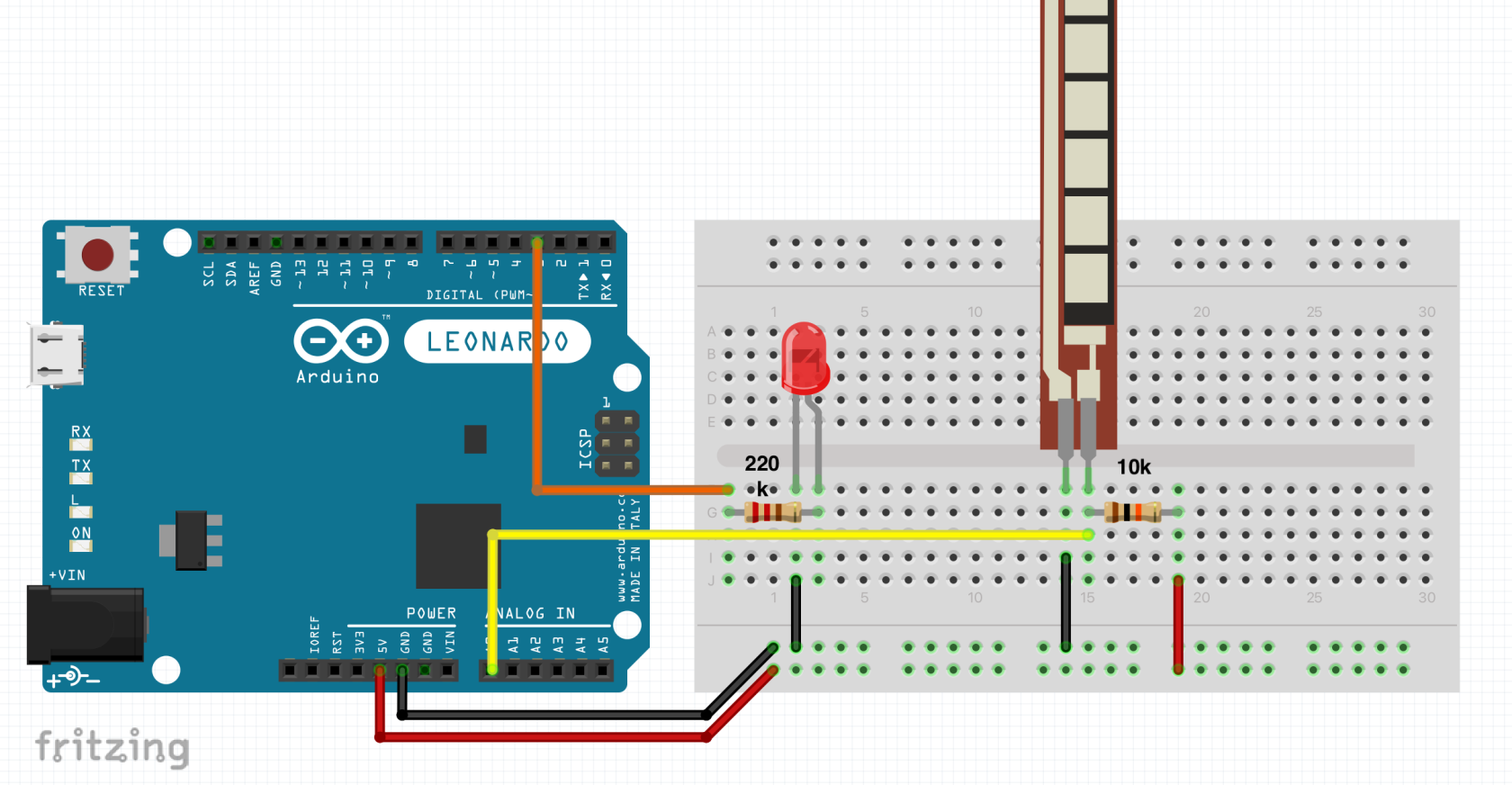How to build your own flex sensor
How to build your own flex sensor
You will need:
- Velostat
- Copper tape
- Foam
- Soldering kit
- Silicon wire (thin threaded wire is also fine)
- Tape of some sort
Arduino wiring:
Arduino code:
/*
Simple code to light up an LED based on resistance sensor
Matt Jarvis - Creative Computing Institute
*/
int ledPin = 3; // pin 3 has PWM
int flexPin = A0; // pin A0 is analog input
int value; // save analog value
void setup(){
pinMode(ledPin, OUTPUT); //Set pin 3 as 'output'
Serial.begin(9600); //Begin serial communication
}
void loop(){
value = analogRead(flexPin); // Read and save analog value from resistor device
Serial.println(value); // Print value to serial
value = map(value, 700, 900, 0, 255); // Map value from analogue (0-1023) to digital (0-255) (PWM)
analogWrite(ledPin, value); // Send PWM value to led
delay(100); // Small delay
}

